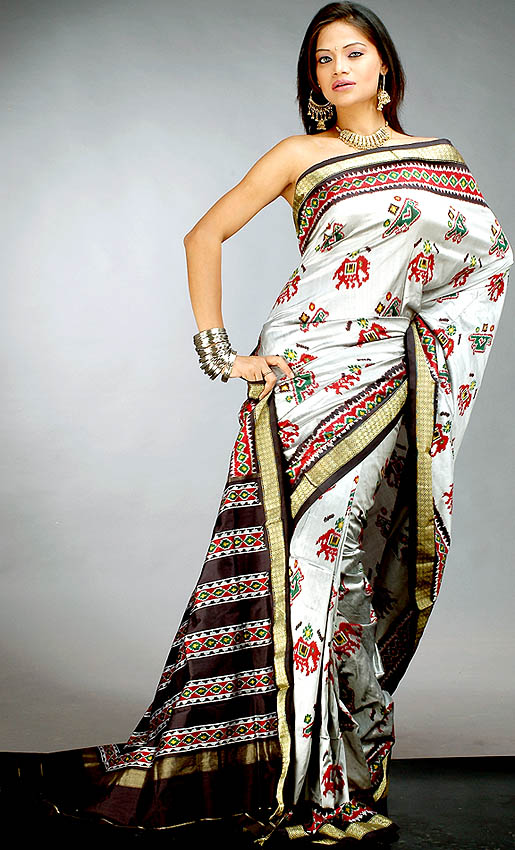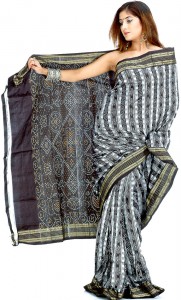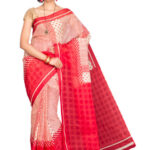Continuing our multi-part Spotlight on Sarees series is this week’s Pochampally Sarees. In recognition of the Bathukamma festival of new Telangana state, we are highlighting one from this region.
A village & mandal in Telangana’s Nalgonda district, Pochampally is known for its very unique print. There is more handwork involved than other sarees. It is considered the most intricate. They are rather avante-garde in that they are bold but restrained, with some traditional themes but contemporary in execution (much like what we do at ACP!). It is especially known for its adaptability in that it goes well with both bright AND light colors. Meaning, you don’t feel that it’s “Oh, gaudy”, you think it is stylish and fashionably eye-catching.
Rather than the commonly used flowers and similar nature motifs, it specializes in geometric print. Generally they are concentric rectangles or occasionally even round circles. It goes very well with elegantly simple jewelry, especially pearls.
Weaving and Dyeing Process
The most notable aspect of this saree is the Ikat weaving, which is the unique contribution of Telangana region. It is part of the common heritage of Telugus and originates specifically from Nalgonda district. While the weaving is done in a zig-zag style, the dyeing itself is random.
There are two types of Ikat: Warp and Weft
Warp weaving is where the bundles of yarn are dried on the loom strings after dyeing. This is supposed to enhance the beauty of the fabric.
Weft weaving is where resist dye is used.There is greater color variance in this type, and as a result, is more difficult.
Pochampally is manufactured in three stages
To manufacture this beautiful fabric ” a design is created using three or four colors so as to decide the number of picks and ends required for a decided motif and accordingly weft and warp groups of yarns are dyed and this is done by tying them using rubber bands”.
So rather than dyeing the whole finished fabric, it is the individual thread that is colored! This may be done multiple times depending on the colors and design. “Variation can also be brought about by using different thread pitch, counts, etc.” It can take up to 1 or 2 months of weaving just under 10 sarees. This comes to 50 metres of fabric, depending on the design, degree of work, colors and thread count used, etc.
Current state of Industry
Despite the stylishness of this saree, the weavers who create it are struggling. Due to low wages in the industry, these master artisans are having difficulty, and the industry is slowly dying. Our sister state has a great opportunity to turn around the fortunes of these great textile workers . It is truly a fashion artform and one hopes it too is revitalized like the common culture of the Telugus.
Pochampally comes in cotton, silk, and sico. It is truly a wonderful saree…and perfect for this last day of Bathukamma. Best wishes to our brothers and sisters in Telangana!
Pochampally Sarees
Saree of the Stylish lady
References:
- http://www.discoveredindia.com/andhra-pradesh/culture-in-andhra-pradesh/handlooms-in-andhra-pradesh/ikat-weaving.htm
- http://www.discoveredindia.com/andhra-pradesh/culture-in-andhra-pradesh/handlooms-in-andhra-pradesh/pochampally-fabrics.htm
- http://www.handlooms.in/handloomindustryinpochampally.aspx
- http://ibnlive.in.com/news/andhra-pradesh-pochampallys-sari-weavers-struggle-to-survive/306215-62-127.html









I want to buy white Pochampally saree .what is the price of this saree
I want to buy for me . I have no saree bussiness.no webside
Hello Nirmalji. We’re an informational community site, so we’re not actually selling these sarees. Glad you liked this style though. Thanks for dropping by.